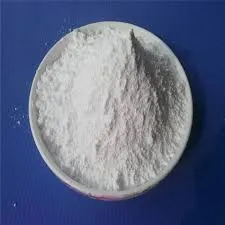Biocides for Cooling Towers Essential for Efficiency and Safety
Cooling towers are crucial components in many industrial processes, helping to dissipate excess heat from various systems. However, the water used in these systems is susceptible to biological contamination, which can negatively impact performance, efficiency, and safety. This is where biocides play a vital role. Biocides are chemical substances that help control harmful microorganisms, such as bacteria, algae, and fungi, in cooling water systems. Their use is essential to ensure the proper functioning of cooling towers and to prevent issues like biofouling.
Understanding Biofouling
Biofouling occurs when microorganisms colonize surfaces within the cooling tower and the associated water systems. This can lead to the formation of biofilms, which are slimy layers of bacteria that can obstruct water flow, reduce heat exchange efficiency, and increase maintenance costs. Biofouling can also pose significant health risks by creating an environment favorable for pathogens. The most notorious of these pathogens is Legionella, which is responsible for Legionnaires’ disease, a severe form of pneumonia. Effective management of cooling tower water systems through biocide use is, therefore, critical not only for operational efficiency but also for public health.
Types of Biocides
There are several types of biocides commonly used for controlling microbial growth in cooling towers
. These include1. Chlorine-Based Biocides Chlorine is one of the most widely used biocides due to its effectiveness in killing a broad spectrum of microorganisms. However, its use requires careful monitoring and control to prevent corrosion and to limit the formation of harmful by-products.
2. Bromine-Based Biocides Similar to chlorine, bromine is effective in controlling microbial growth. It is often preferred in systems where pH levels are higher, and it can remain effective over a more extended period, especially in warm water conditions.
biocide for cooling tower

3. Oxidizing Agents Other oxidizing agents, such as ozone and hydrogen peroxide, are also employed in cooling towers. They provide effective disinfection without forming harmful by-products, making them an attractive alternative despite potential higher costs.
4. Non-Oxidizing Biocides These biocides work by disrupting cellular functions in microorganisms and are beneficial for long-term control of biofilm development. Examples include quaternary ammonium compounds and isothiazolinones.
Finding the Right Balance
The selection of the appropriate biocide depends on various factors, including system design, water quality, and environmental regulations. It is essential to balance biocide use with potential environmental impacts. Over-reliance on chemical treatments can lead to resistance in microbial populations, emphasizing the need for a comprehensive water management strategy that combines biocide usage with other methods, such as physical cleaning and water treatment technologies.
Regulatory Compliance and Safety
The use of biocides in cooling towers is often subject to regulatory oversight to ensure environmental safety and the protection of public health. Operators must comply with local regulations regarding biocide usage, monitoring, and reporting practices. In addition, proper training for personnel is crucial to minimize risks associated with the handling of these chemicals and to ensure effective application.
Conclusion
Biocides are an essential component for maintaining the efficiency and safety of cooling towers. By effectively controlling microbial growth, they help prevent biofouling, protect public health, and reduce operational costs. As industries face growing challenges related to environmental regulations and chemical safety, adopting a balanced approach to biocide use, combined with innovative water treatment strategies, will be key to sustaining the efficiency and longevity of cooling systems.

